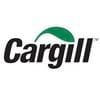PRRS Dual Technology vaccination program (MLV/KV): virus circulation monitoring in pig flows using oral fluid sampling
Published: March 28, 2025
Source : B. Boivent 1, O. Merdy 2, G. Perreul 1, J.-B. Hérin 1, F. Joisel 2,* / 1 Merial S.A.S., Ancenis; 2 Merial S.A.S., Lyon, France.
Summary
Keywords: oral fluid, vaccination, whole herd stabilization
Introduction:
Porcine reproductive and respiratory syndrome virus (PRRSV) is endemic in major swine producing countries. Dual-technology (DT) vaccination programs combining modified live vaccine (MLV) and killed vaccine (KV) have gained interest in order to better control PRRSV infection and favor whole herd stabilization. A survey for PRRSV circulation in the pig flow on eight farms having implemented a DT vaccination program in sows was performed by monitoring the PRRSV serological and virological status from the nursery to late fattening stages.
Materials and Methods:
In these farms, the initial routine PRRSV vaccination scheme included a type-1 PRRSV MLV used for primo-immunization in quarantine followed by booster injections at D6 of lactation or at D60 of gestation or blanket vaccination every 4 months. The piglets were not vaccinated against PRRSV. PROGRESSIS sow vaccination at D90 of gestation was added to the routine of the herd. PRRSV infection and antibody profiles were monitored using oral fluid (OF) sample collection in the pig flows. Samples were assayed for PRRSV antibody level using a commercial kit (Idexx PRRS OF Ab Test) and viral RNA presence was assessed using a RT-PCR technique (LSI VetMAX™). Eight transversal surveys and 14 longitudinal follow-ups of 3 to 5 OF samples per survey or follow-up were performed. Data was collected prior to and following the implementation of the KV additional injections in sows for a total of 81 OF samples.
Results:
The percentages of OF positive for viral RNA in pigs aged 5-7, 8-10, 11-13, 14-16 and more than 17 weeks were 17%, 20%, 40%, 84%, 40%, respectively, before the implementation of the KV vaccination and 0%, 0%, 0%, 38% and 60%, respectively, for pigs born from KV-boosted sows. Virus circulation appeared to be delayed to mid-fattening, i.e. from week 14 of life and later in pigs born from KV-boosted sows.
In OF, the antibody levels from piglets born from MLV-only-vaccinated sows were low as early as a few weeks following weaning, thus confirming lower MDA transfer and subsequently high susceptibility to PRRSV infection. Pigs born from the KV-boosted dams showed a significantly higher anti-PRRSV ELISA antibody level just after weaning (p< 0.05), which steadily decreased up to 11 to 16 weeks of age depending on the batch. In these pigs, the seroconversion indicative of virus circulation appeared to be consistently delayed to a few weeks following the entry of the pigs in the fattening unit.
Conclusion:
These results suggest that the addition to a PRRS MLV program of a PROGRESSIS vaccination in sows around 3 weeks before farrowing can be an efficient tool to better control early virus circulation in pigs and to lead to a whole herd stabilization.
Disclosure of Interest: B. Boivent Conflict with: Merial S.A.S., O. Merdy Conflict with: Merial S.A.S., G. Perreul Conflict with: Merial S.A.S., J.-B. Hérin Conflict with: Merial S.A.S., F. Joisel Conflict with: Merial S.A.S.
Published in the proceedings of the International Pig Veterinary Society Congress – IPVS2016. For information on the event, past and future editions, check out https://www.theipvs.com/future-congresses/.
Content from the event:
Related topics:
Mentioned in this news release:
Boehringer Ingelheim
Phileo by Lesaffre
Boehringer Ingelheim
Boehringer Ingelheim
Show more
Recommend
Comment
Share

Would you like to discuss another topic? Create a new post to engage with experts in the community.










